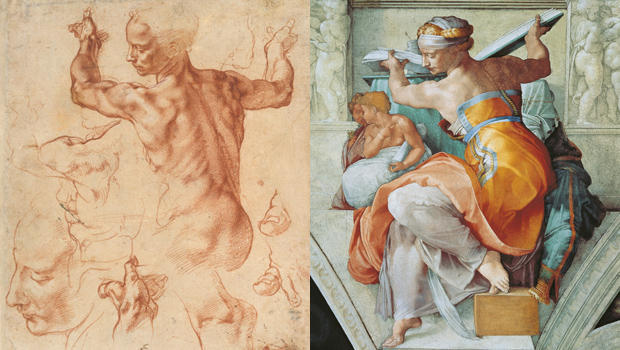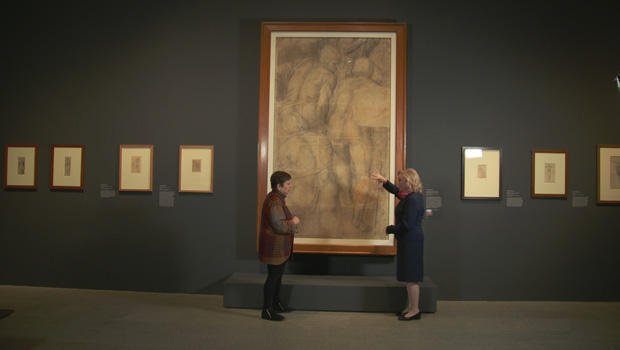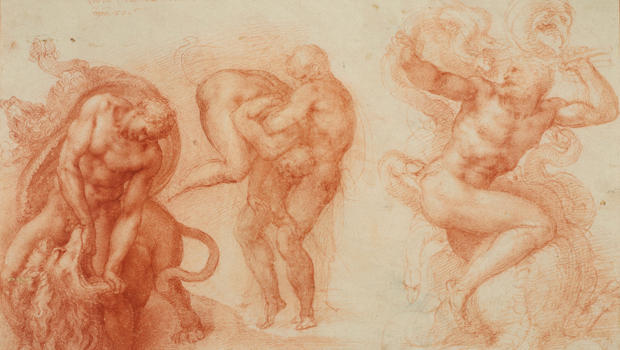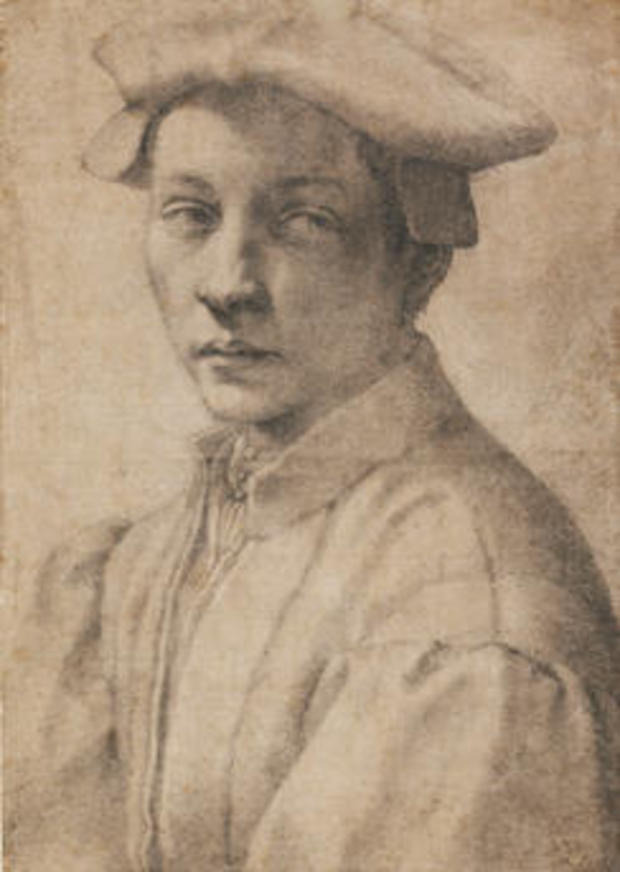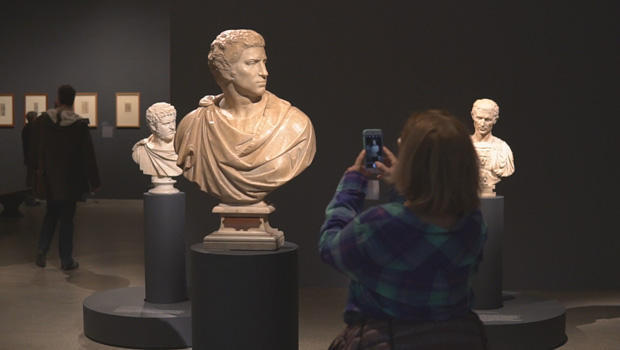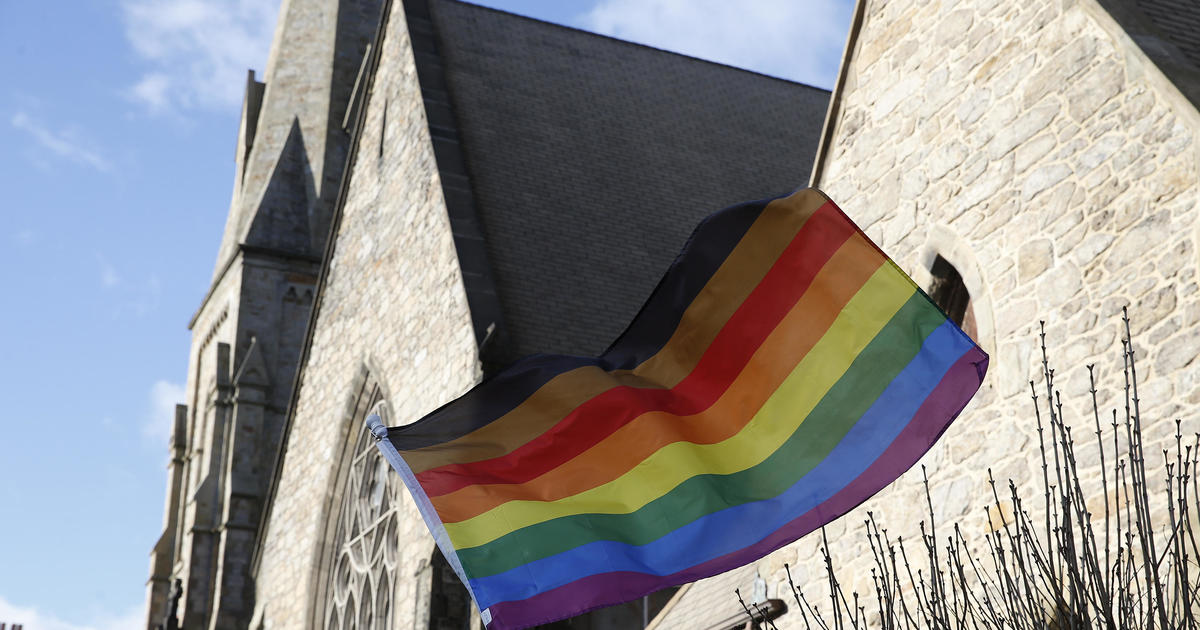The divine creations of Michelangelo
MICHELANGELO is revered as one of the greatest artists of the Renaissance. And as Martha Teichner now shows us, for the next two months you won't have to go to Italy to see some of his finest work:
Who hasn't seen "The Creation of Adam"? It's right in the middle of the ceiling of the Sistine Chapel, at the Vatican in Rome. For anyone who doesn't know, the frescoes were the work of Michelangelo -- Il Divino, his contemporaries called him … "The Divine One."
For anyone who ever wondered, "How did he do it?" there are clues in his drawings, the subject of a blockbuster exhibition at the Metropolitan Museum of Art in New York City.
One study, originally of a boy posing in his workshop, became a woman, a female prophet, the Libyan Sibyl, said Carmen Bambach, curator of the Met show.
"In the final fresco, this figure which is a little less than a foot tall, is in the actual ceiling about 14 feet tall."
In the film, "The Agony and the Ecstasy," starring Charlton Heston as Michelangelo, the artist and his assistants take a giant drawing, or cartoon, for the Sistine ceiling; prick little holes in it; then squirt it with charcoal dust, in order to transfer the outline onto wet plaster for painting -- like a dressmaker transferring a pattern onto fabric.
One full-scale drawing for a fresco -- the only one of Michelangelo's big cartoons for the Vatican that survives -- shows changes the artist made in his depiction of Roman soldiers watching the crucifixion of St. Peter.
"Drawing was, for him, a language, and really the easiest way and the most natural way for him to express himself," said Bambach.
Born in 1475 outside Florence, Michelangelo Buonarroti was famous for his explosive temper, but also for the loyalty of his friends.
Believe it or not, he didn't like painting. He loved sculpture, finishing his famous "Pieta" at the age of 24 … his colossal "David" at 28.
But he was always drawing.
"Michelangelo often does sketches for his sculptures, as well as drawings on paper, and he uses the drawings on paper essentially to test ideas," said Bambach.
"You can see him thinking on the paper, going from one side to another, turning the sheet around. He doesn't pause. He just fills it all up."
His favorite subject: the human body.
"To him, in many ways it's almost like a religion, shall we say, in the sense that the beauty of the human body, particularly the male human body, reflects the divine creation of God," said Bambach.
These bodies are strong, muscular. They twist and turn and stretch.
One of his rare portraits, of a young nobleman, was a gift made out of love for a young man with whom Michelangelo very likely was infatuated.
Widely believed to be homosexual, he fell in love with a succession of young men. As gifts, he presented to them, and to other friends, some of his most beautiful drawings -- intimate little masterpieces.
Michelangelo's drawings are the paper trail documenting his genius, such as his designs for the dome of St. Peter's -- for 17 years he was the landmark's chief architect.
Did he ever draw himself? Sort of, as a joke, in the margins of a humorous sonnet he wrote, making fun of painting the Sistine ceiling. (Yes, he wrote poetry, too.)
"He's tired of having paint dripping on his face as if his face were a drop cloth," Bambach said. "And then he does this caricature of himself, and he's standing, his tummy coming out, his back is already quite arched, and he's painting a figure on the ceiling that looks pretty much like a Martian."
Just before he died, in 1564 at the age of 88, Michelangelo burned many of his drawings.
His biographer, a close friend, said it was because he didn't want anyone to see how difficult it had been to make his art look effortless.
For more info:
- Michelangelo: Divine Draftsman & Designer, at the Metropolitan Museum of Art, New York City (through February 12) | Tickets
- Catalogue: "Michelangelo: Divine Draftsman & Designer" (Hardcover)
- Sistine Chapel (The Vatican Museums)
- "The Agony and the Ecstasy" on DVD and Blu-Ray (Amazon) and via streaming (Amazon, iTunes)
